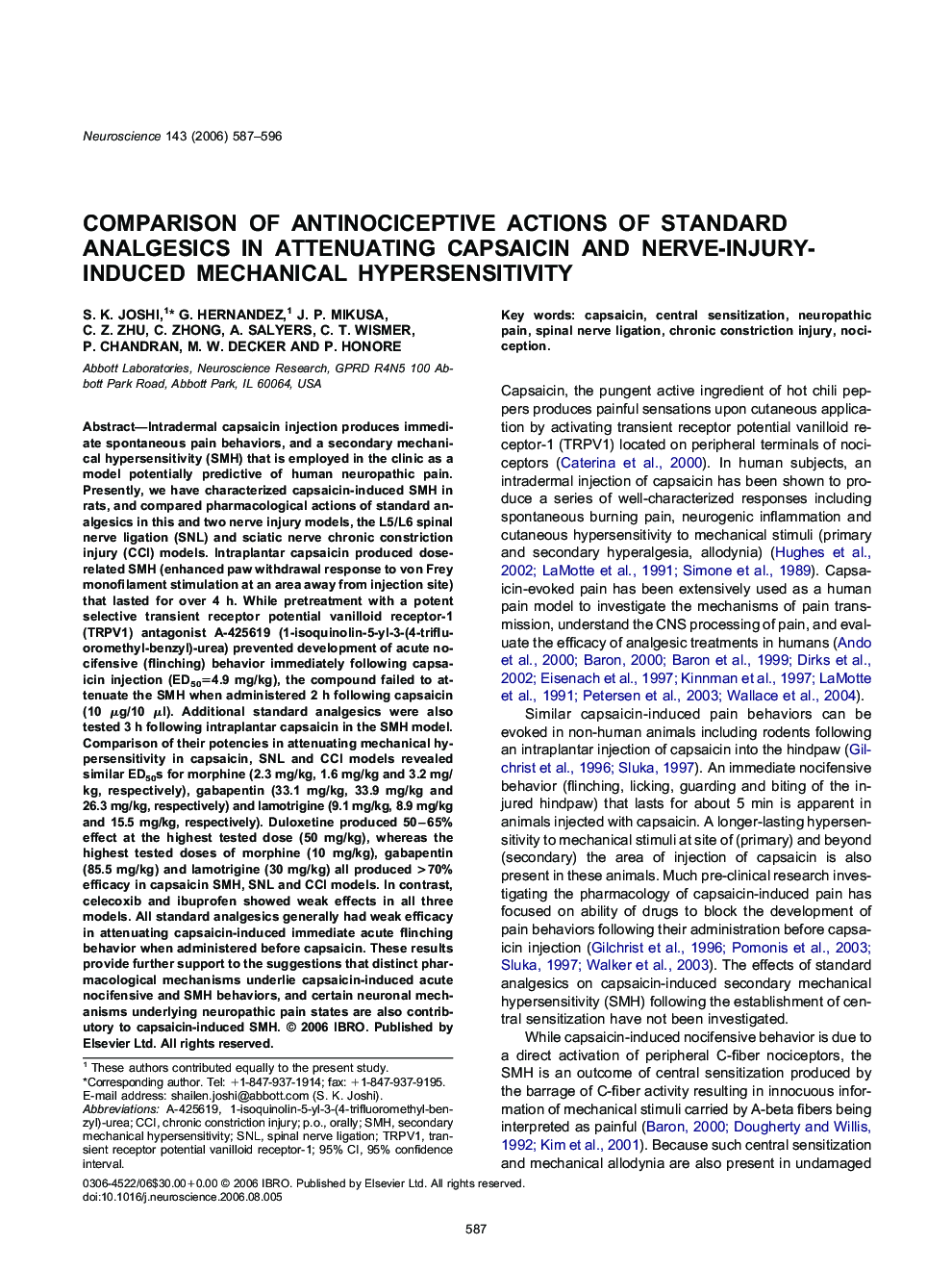| کد مقاله | کد نشریه | سال انتشار | مقاله انگلیسی | نسخه تمام متن |
|---|---|---|---|---|
| 4341276 | 1295829 | 2006 | 10 صفحه PDF | دانلود رایگان |

Intradermal capsaicin injection produces immediate spontaneous pain behaviors, and a secondary mechanical hypersensitivity (SMH) that is employed in the clinic as a model potentially predictive of human neuropathic pain. Presently, we have characterized capsaicin-induced SMH in rats, and compared pharmacological actions of standard analgesics in this and two nerve injury models, the L5/L6 spinal nerve ligation (SNL) and sciatic nerve chronic constriction injury (CCI) models. Intraplantar capsaicin produced dose-related SMH (enhanced paw withdrawal response to von Frey monofilament stimulation at an area away from injection site) that lasted for over 4 h. While pretreatment with a potent selective transient receptor potential vanilloid receptor-1 (TRPV1) antagonist A-425619 (1-isoquinolin-5-yl-3-(4-trifluoromethyl-benzyl)-urea) prevented development of acute nocifensive (flinching) behavior immediately following capsaicin injection (ED50=4.9 mg/kg), the compound failed to attenuate the SMH when administered 2 h following capsaicin (10 μg/10 μl). Additional standard analgesics were also tested 3 h following intraplantar capsaicin in the SMH model. Comparison of their potencies in attenuating mechanical hypersensitivity in capsaicin, SNL and CCI models revealed similar ED50s for morphine (2.3 mg/kg, 1.6 mg/kg and 3.2 mg/kg, respectively), gabapentin (33.1 mg/kg, 33.9 mg/kg and 26.3 mg/kg, respectively) and lamotrigine (9.1 mg/kg, 8.9 mg/kg and 15.5 mg/kg, respectively). Duloxetine produced 50–65% effect at the highest tested dose (50 mg/kg), whereas the highest tested doses of morphine (10 mg/kg), gabapentin (85.5 mg/kg) and lamotrigine (30 mg/kg) all produced >70% efficacy in capsaicin SMH, SNL and CCI models. In contrast, celecoxib and ibuprofen showed weak effects in all three models. All standard analgesics generally had weak efficacy in attenuating capsaicin-induced immediate acute flinching behavior when administered before capsaicin. These results provide further support to the suggestions that distinct pharmacological mechanisms underlie capsaicin-induced acute nocifensive and SMH behaviors, and certain neuronal mechanisms underlying neuropathic pain states are also contributory to capsaicin-induced SMH.
Journal: Neuroscience - Volume 143, Issue 2, 1 December 2006, Pages 587–596